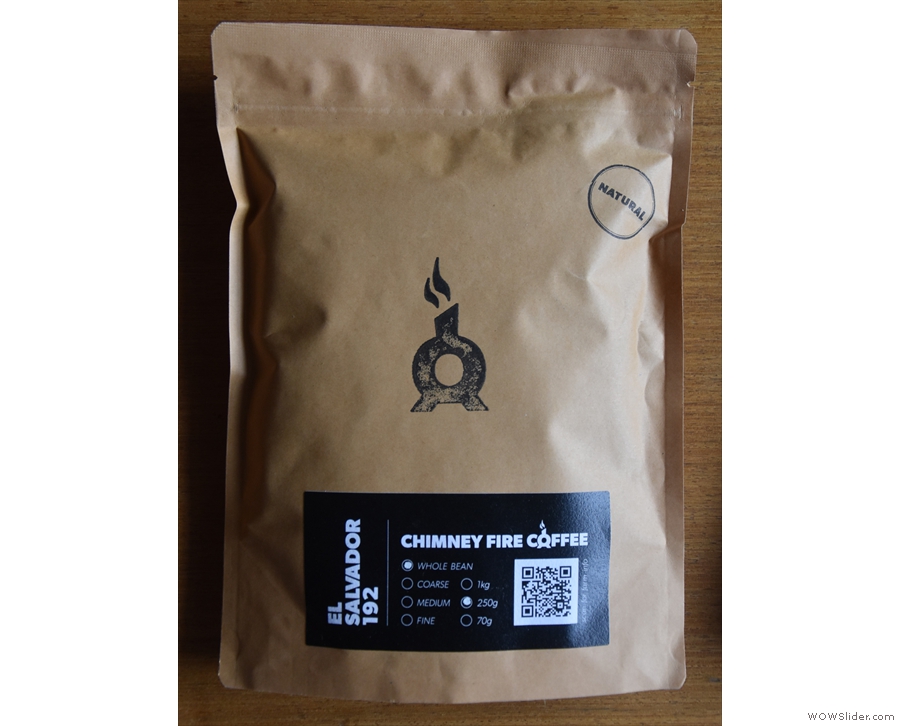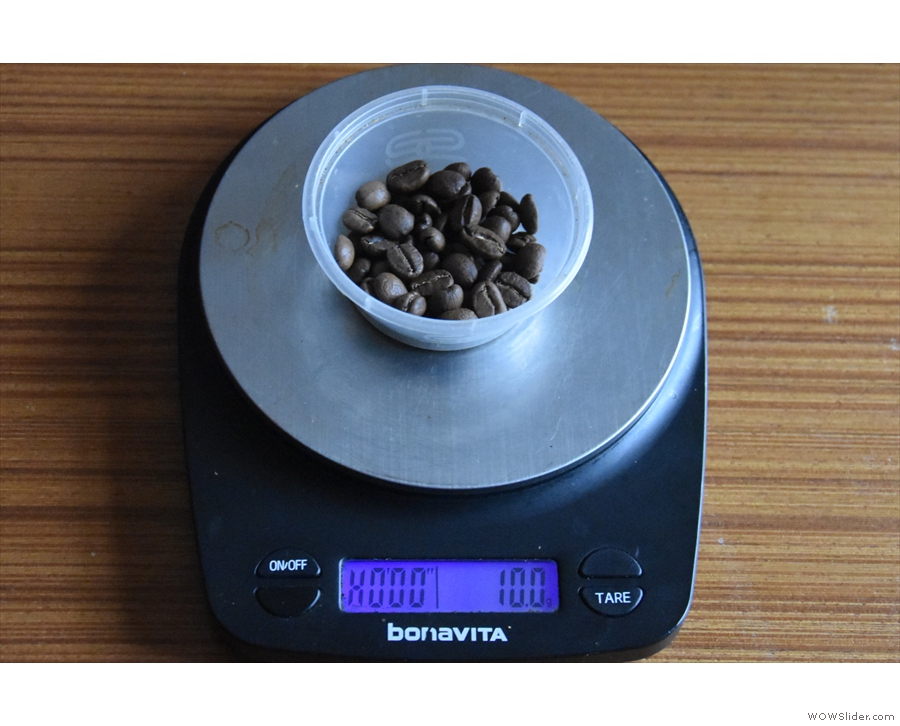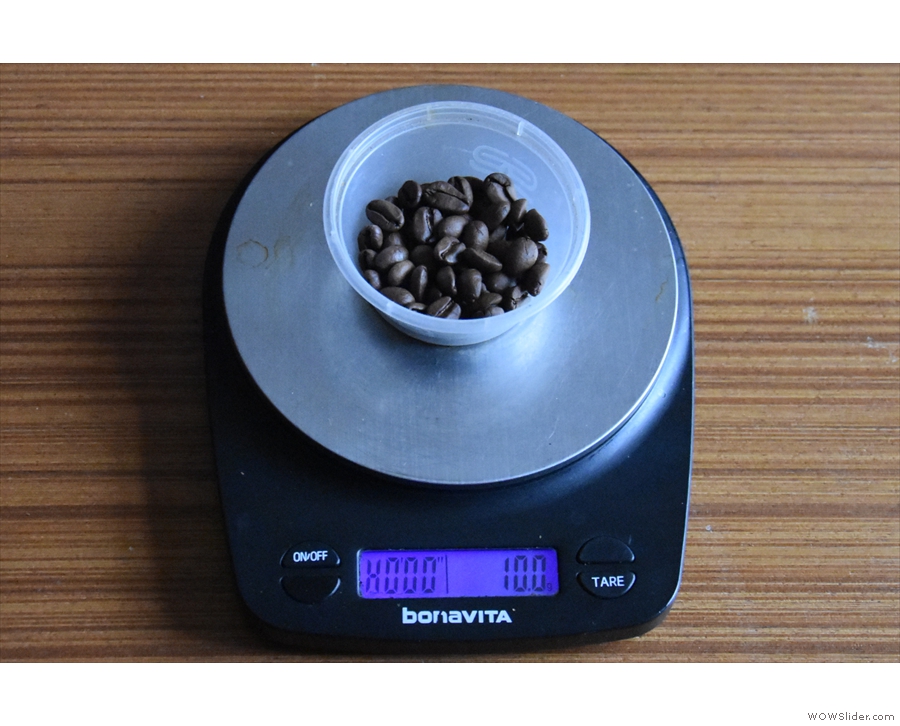 I started 2021 with a new Meet the Roaster, featuring the lovely folk at Chimney Fire Coffee. I ended that post with a promise to tell you more about Chimney Fire’s coffee, and specifically the El Salvador Three Ways, a direct trade coffee from the Don Tomas Estate in El Salvador, where the same coffee has been processed three different ways: natural, washed and honey processed.
I started 2021 with a new Meet the Roaster, featuring the lovely folk at Chimney Fire Coffee. I ended that post with a promise to tell you more about Chimney Fire’s coffee, and specifically the El Salvador Three Ways, a direct trade coffee from the Don Tomas Estate in El Salvador, where the same coffee has been processed three different ways: natural, washed and honey processed.
This post is mostly about the El Salvador, but I did want to briefly mention the rest of Chimney Fire’s excellent range. There’s the Ranmore signature espresso blend, plus a classic espresso from Peru and a sugar cane decaf from Colombia. Added to that is a selection of around five single-origins which, depending on the coffee, are roasted with espresso or filter in mind, or, if it works for the coffee, an omni-roast which means that it should work equally well as espresso or filter.
Finally, if you want something more challenging, there’s the Discovery Range. This has a different, limited-edition coffee each month, but Chimney Fire won’t tell you where it’s from ahead of time, just providing tasting notes, the idea being that you should focus more on the flavour than the origin!
You can see what I made of the El Salvador Three Ways after the gallery.
The bulk of this post is about Chimney Fire’s El Salvador Three Ways, where the coffee comes from the same farm, the Don Tomas Estate, but has been processed in three different ways to highlight the impact that processing can have on the flavour of the coffee. Rather than repeat myself, check out my Coffee at Home post on coffee processing to find out more about the three different methods used: natural, washed and honey processed.
To compare the three coffees, I held my own cupping, following Chimney Fire’s basic instructions which you can find on its website (follow the link and scroll to the bottom of the page). I started with three identical bowls and 10 grams of each coffee, which I ground to my standard cafetiere grind. I then took in the aroma of each ground coffee before putting them in the bowls, starting my timer and pouring 175 ml of hot water over the grounds.
After four minutes, I broke the crust at the top of each bowl, taking in the coffee’s aroma a second time. Finally, I waited another five minutes (nine minutes from starting the timer) before tasting each coffee in turn, slurping a small amount from a soup spoon (sadly, I don’t have my own cupping spoon). I continued tasting as the coffees cooled, since I find that I’m unusually sensitive to temperature. Also, when it comes to filter coffee, the flavour often evolves as the coffee cools.
So, what did I find? Well, I’ll be honest: I was a little disappointed, although that probably says more about my undiscerning palate than it does about the coffee. This is where having Amanda around would have been handy since she is much more discerning (taste-wise) than I am.
When it came to aroma, the three coffees were very similar, with a distinct smell that I’ve not encountered before. I’m tempted to say that it was more pronounced in the naturally processed coffee, but honestly, I doubt that I could have told the three apart in a blind test (which is quite hard to do when you are on your own, so I skipped that). The same was true of the aroma when I broke the crust, each coffee having the same, distinctive smell (if I had a more discerning palate, I could probably give you a decent description of it, but sadly “distinctive” will have to do!).
Finally, when it came to tasting, there was a similar pattern, with the distinctive smell leading to a very distinctive flavour in all three coffees. I was hoping that the differences between them would leap out at me, but in truth it was much more subtle, with a gentle progression between the washed (the cleanest of the three) through the honey-processed to the natural (the most complex).
I wish I could tell you more than that, but there it is. This isn’t a knock on either the coffee or Chimney Fire, by the way. It’s an excellent coffee, regardless of processing method, which I’ve been drinking as a regular filter (through my Clever Dripper) throughout the week. I found them all very tea-like, with a wonderful red colour in the cup.
Left to my own devices, I tend to drink either bold, boozy naturally processed coffees or clean, subtle washed coffees. This was neither, although it was closer to the subtly of the washed coffees I tend to enjoy, enhanced by the distinctive taste (which I wish I could put it into words better than “distinctive”).
In summary, although I didn’t find the differences I was hoping for, I thoroughly enjoyed my cupping and was fascinated by the process. I’m now kicking myself for not having done more (that is, any!) home cuppings before now. In particularly, I wish I’d cupped the two different decaf roasts from Workshop Coffee which I wrote about last year.
If you want to try the experience for yourself, Chimney Fire still has bags of the El Salvador available. Alternatively, why not cup some of your favourite coffees? It’s something I’m thinking of doing (and wish I had done) now that I’m at home more, so watch this space!
If you liked this post, please let me know by clicking the “Like” button. If you have a WordPress account and you don’t mind everyone knowing that you liked this post, you can use the “Like this” button right at the bottom instead. [bawlu_buttons]
Don’t forget that you can share this post with your friends using the buttons below.














 1
1 2
2 3
3 4
4 5
5 6
6 7
7 8
8 9
9 10
10 11
11 12
12 13
13
Pingback: Meet the Roaster: Chimney Fire Coffee | Brian's Coffee Spot
Pingback: Taylors Discovery: As One Washed & Natural | Brian's Coffee Spot
Pingback: Freak & Unique (and Other Coffees) | Brian's Coffee Spot
Pingback: 2021 Awards – Best Saturday Supplement | Brian's Coffee Spot